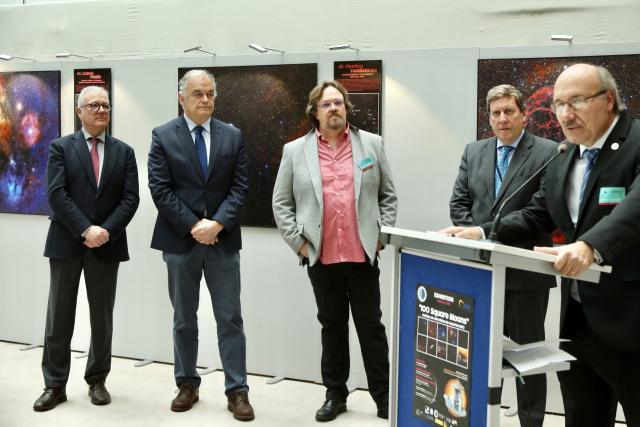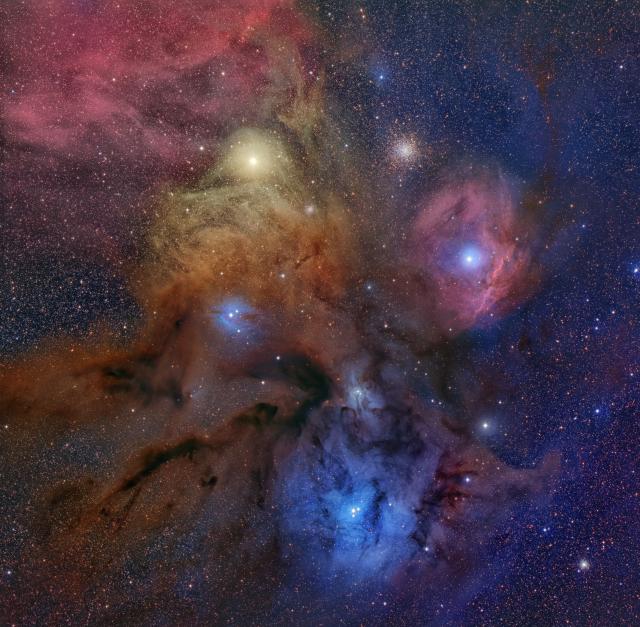Stars are not born alone, but in families with tens or millions of members, from colossal clouds of gas and dust (#2) in which lumps of matter are formed. These will give rise to bodies of all sizes: from giant stars (dozens of times larger than the Sun), to small asteroids or tiny lumps of dust, through all kinds of exoplanets and stars of various dimensions, whose border are known as Brown Dwarf stars. These stellar groupings keep fundamental clues to understand the Universe, since the stars of a stellar cluster, although of different sizes, will have a common chemical composition, a same age and will occupy a very localized region of space, turning out to be exceptional laboratories to confirm theories of stellar evolution, to determine distances in the Cosmos and to define with great precision many other physical properties.
The Pleiades are one of the closest and most easily identifiable stellar groupings or asterisms in the sky, with innumerable nicknames in all civilizations and references in the literature of the entire planet. Although this cluster has more than a thousand stars of all sizes, we can only identify between seven and nine stars with the naked eye, depending on the visual sensitivity of each person and the light pollution of the sky. The brightest stars of the Pleiades, with about eight solar masses, are a thousand times brighter than the Sun. However, using telescopes we can observe much weaker stars and even study objects at the boundary between what is a very small star and a giant planet due, especially, to their relative closeness, at only 440 a.l. In 1995, it was confirmed for the first time from the Teide Observatory (Tenerife) the existence of a brown dwarf star in this stellar cluster, which was called Teide 1.
It is estimated that the stellar cluster M45 is relatively young, with an age of about 120 million years. When it triples, the stars of the cluster will have gradually left the nest where they were born, mixing in the anonymity offered by the 100,000 million stars that make up our galaxy, the Milky Way.
The Pleiades are easily identifiable in the sky. Their position, close to the constellation of the Bull, is shown in the stellar map and whose red square corresponds to the observed area of the sky.
The image is the result of adding 8 exposures of 900s in each of the 3 wide filters R(red), G(green) and B(blue), plus 21 exposures of 900s in the filter L(luminance) with the Astrógrafo Sky Treasure Chest (STC) of the UC3. Author: D. López ©IAC
The image is the result of adding 8 exposures of 900s in each of the 3 wide filters R(red), G(green) and B(blue), plus 21 exposures of 900s in the filter L(luminance) with the Astrógrafo Sky Treasure Chest (STC) of the UC3. Author: D. López ©IAC.



